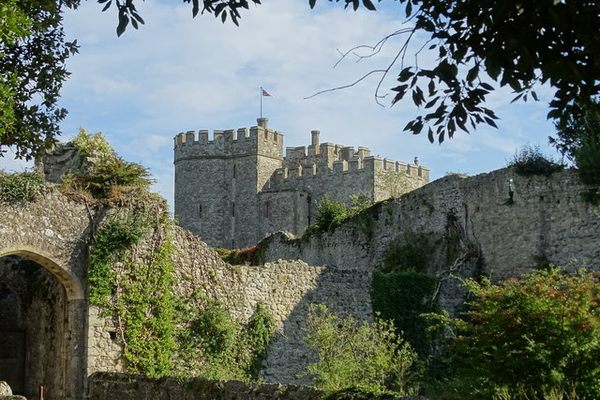About
This foreboding 13th-century tower is the sole surviving relic of the medieval castle of Rouen, built by King Phillip II of France after his victory over the English. The castle played an important part in the Hundred Years' War and the religious wars between French Catholics and Huguenot Protestants, but its most infamous role was as the place where Joan of Arc was imprisoned and interrogated before being burned at the stake in 1431.
The "Maid of Orléans," as the French heroine was known, had been captured by the English at the Siege of Compiègne, her final battle. She was jailed at Beaurevoir Castle where she tried to escape several times, almost succeeding on one occasion, and so was moved to the castle at Rouen, which was considered escape-proof. French forces attacked the city several times in the months that followed in a desperate attempt to rescue her, but each time they were forced to withdraw.
Joan was put on trial for heresy by an English kangaroo court and subjected to torture. The chronicles say that when the interrogators at the castle showed her their instruments of torture, hoping perhaps to break her spirit and obtain a confession without having to use them, she stared them down fearlessly and replied with tremendous and characteristic bravery, "Truly, if you have to pull my members and my soul from my body, I shall say nothing else; and if I say something to you, I would always say to you afterwards that you made me say it by force."
After several public interrogations designed to break down her will, Joan was forced to sign a document to renounce her beliefs and to stop wearing the clothing of a soldier. But when guards removed her woman’s clothing, she was forced to wear men’s clothes and sentenced to death for it. She was burned at the stake as a heretic in the center of the city.
Although the English and Burgundians may have achieved their goal of humiliating the French in the short term, in the long term they were to fail spectacularly. In the centuries to come Joan of Arc became not only a saint but a beloved and immortalized historical figure. The castle itself was largely destroyed in the 16th century, yet the tower where this remarkable leader once faced her persecutors still remains standing. The tower was left derelict for many hundreds of years but was restored, and today is open to the public as a museum.
Related Tags
Know Before You Go
The Tower of Joan of Arc (Tour Jeanne d'Arc), also known as the Donjon de Rouen (Dungeon of Rouen) is easy to find due to its large size and prominent location between the train station and the Museum of Arts. It is best to view the tower from the street, although the museum at the tower is also worth visiting despite being overshadowed by an unfortunate escape room game. The tower interior is closed for the season and will reopen in spring of 2019. There is also a fine museum in the city dedicated to the memory and history of Joan of Arc.
Community Contributors
Added By
Published
February 28, 2019
































